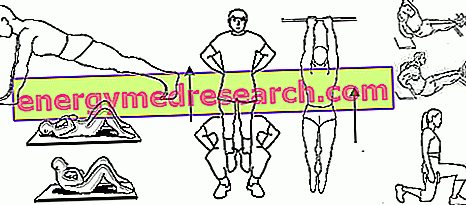ATENOL ® is a drug based on Atenolol
THERAPEUTIC GROUP: Beta-blockers
IndicationsAction mechanismStudies and clinical effectiveness Usage and dosage instructionsWarnings Pregnancy and lactationInteractionsContraindicationsUndesirable effects
Indications ATENOL ® Atenolol
ATENOL ® is indicated for the treatment of arterial hypertension, also of renal origin, angina pecotirs and arrhythmias, and early intervention of acute myocardial infarction.
Mechanism of action ATENOL ® Atenolol
Atenolol, administered with ATENOL ® is rapidly absorbed at the gastrointestinal level, reaching maximum plasma concentration from 2 to 4 hours after its intake. The high hydrophilicity makes the pharmacokinetics of this active principle somewhat linear and constant among the various individuals, minimizing hepatic metabolism and passing through biological barriers (membranes).
The therapeutic action of atenolol is due to its cardioselective beta-blocking capabilities. In fact, at low dosage it can exert an inhibitory effect on Beta 1 cardiac receptors, reducing contractility and heart rate (negative inotropic and chronotropic effect). Furthermore, the work of the heart decreases thanks to a significant reduction in cardiac output, which is generally accompanied by an increase in diastolic filling time and an improvement in the coronary vasculature of the myocardium.
Atenolol has no intrinsic sympathomimetic or membrane stabilizing action. After a plasma half-life of 6/9 hours, atenolol is generally excreted unchanged in the urine.
Studies carried out and clinical efficacy
ATENOLOL REDUCES SEXUAL CAPACITIES IN HYPERTENSE PATIENTS
This study conducted on 110 men with hypertension, assesses the effects of antihypertensive therapy on sexual activity and plasma testosterone concentrations. After 8 weeks of treatment with atenolol, there was a deterioration of sexual activity accompanied by a significant reduction in blood testosterone levels.
2.ATENOLOL AND CARDIOVASCULAR RISK IN DIABETIC PATIENTS
Very important study that investigates the antihypertensive and cardioprotective effects of atenolol.
It is known that antihypertensive therapy has as its main purpose the reduction of mortality linked to the incidence of cardiovascular events. Atenolol, while guaranteeing a good reduction in blood pressure, does not seem to be equally effective in reducing the associated mortality, thus justifying the reduced use in the common clinical practice.
3. ATENOLOL IN THE TREATMENT OF ESSENTIAL HYPERTENSION
The antihypertensive efficacy of atenolol has been demonstrated by several studies published in the literature.
This study, in detail, shows the effects of atenolol in the treatment of essential hypertension in 125 patients treated with 100mg daily atenolol. The pressure reduction was around 13 mmHg, with a high rate of responsiveness estimated at around 64%.
The efficacy of this drug has been enhanced by the good tolerability observed.
Method of use and dosage
ATENOL ® 100 mg atenolol tablets:
- For the treatment of arterial hypertension, even of renal origin, we recommend taking one tablet a day. The maximum therapeutic effect is observed after about 2 weeks of treatment; therefore therapeutic optimization should not take place before this period. In case of reduced therapeutic efficacy of the aforementioned dosage in monotherapy, one could resort to the simultaneous intake of other antihypertensive drugs, such as diuretics.
- For the treatment of angina pectoris the dosage of 100mg / day seems to be the most used and effective one.
- For the treatment of arrhythmias it is possible to use injectable vials, then providing maintenance with daily doses of 50/100 mg of atenolol in oral form.
IN ANY CASE, BEFORE TAKING ATENOL ® Atenololo - THE REQUIREMENT AND CHECK OF YOUR DOCTOR IS NECESSARY.
Warnings ATENOL ® Atenolol
The administration of ATENOL ® should be performed with particular care in patients suffering from renal insufficiency or bradycardia, for which it is necessary to adjust the therapeutic dosage in order to minimize the side effects, preserving the therapeutic ones.
The cardioselective effects and the absence of inhibitory activity against salbutamol and isoprenaline on bronchodilation make atenolol one of the few Beta-inhibitors that can be administered even to asthmatic patients or patients with bronchopathy.
In diabetic patients, however, this drug may mask some signs and symptoms of hypoglycemia.
Anaphylactic reactions linked to the intake of ATENOL ® may be more frequent in subjects predisposed to the development of allergies and not responsive to adrenaline therapy.
The drug does not seem to interfere with the patient's normal perceptual functions; therefore, it does not affect the ability to drive vehicles and use machinery.
PREGNANCY AND BREASTFEEDING
Despite the absence of clinical trials showing the teratogenic and mutagenic effect of atenolol on the fetus, it is not recommended, however, to take it during the pregnancy period.
Atenolol can be secreted in breast milk; therefore, given the absence of studies in the pediatric field, it is recommended to suspend breastfeeding during therapy with ATENOL ®
Interactions
ATENOL ® should not be administered concomitantly with class I antiarrhythmic drugs, verapamil and clonidine.
In these cases, before starting the atenolol intake, it would be necessary to stop the therapy for at least 48 hours.
Furthermore, given the inotropic and chronotropic negative action of atenolol, the choice of sedative and anesthetic therapy, during surgical procedures, should also be made on the basis of the reduced negative inotropic activity of these drugs.
Contraindications ATENOL ® Atenolol
Given the negative inotropic and chronotropic action, the administration of ATENOL ® is contraindicated in case of bradycardia, atrioventricular block, uncontrolled heart failure and hypersensitivity to one of its active ingredients.
Undesirable effects - Side effects
The undesirable effects observed following the administration of ATENOL ® were generally transient and clinically insignificant.
The most common ones include cold extremities, fatigue and mental confusion, nausea, headache and visual hallucinations.
Less frequent were the cases of thrombocytopenia, bradycardia, granulocytopenia, reduced cardiac function, alopecia and hypersensitivity reactions, for which it was necessary to suspend therapy.
In any case the suspension of treatment with atenolol should take place gradually, especially in those patients with deterioration of cardiac function.
Note
ATENOL ® is salable only under medical prescription.
The use of ATENOL ® in sportsmen, in the absence of therapeutic necessity, to reduce the physiological response to stress and the related symptoms (tremor of the limbs, increase in blood pressure, increase in emotional tension etc.) is a DOPANT practice.



